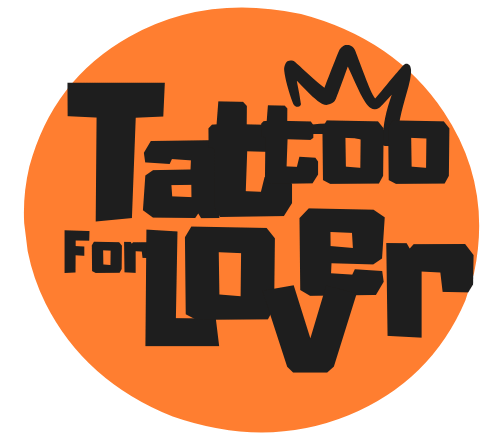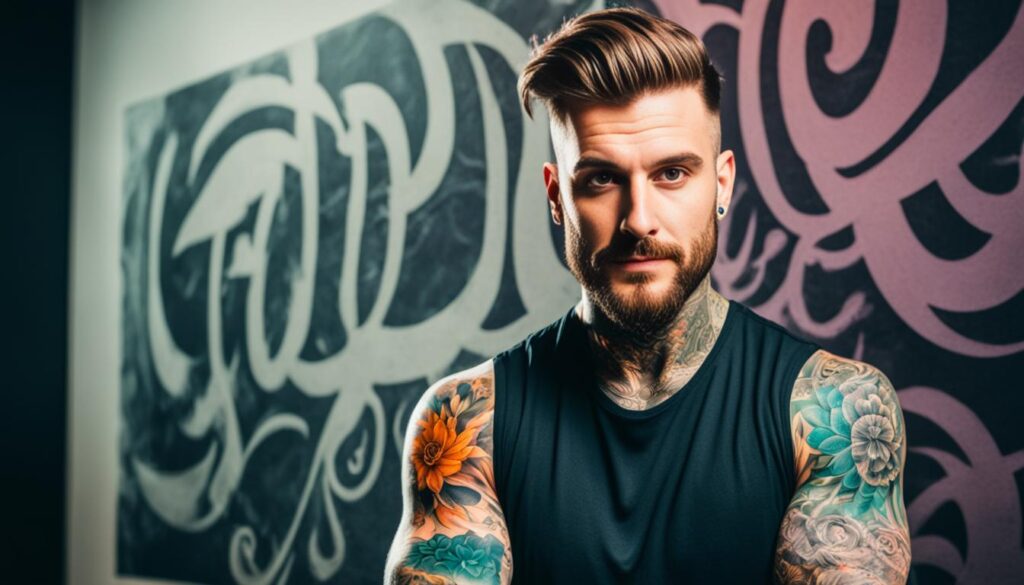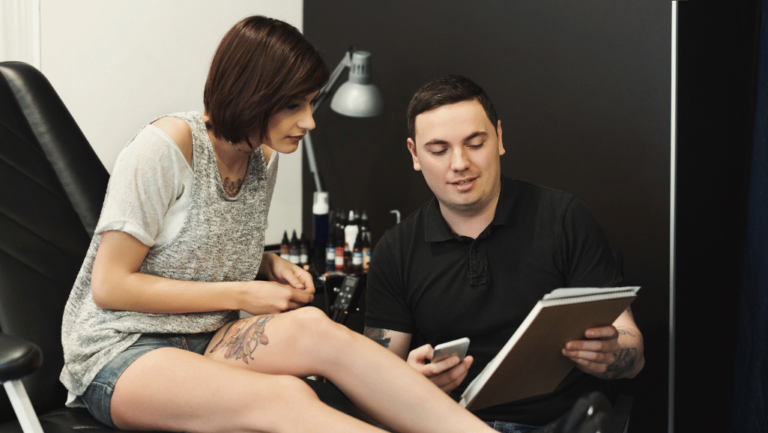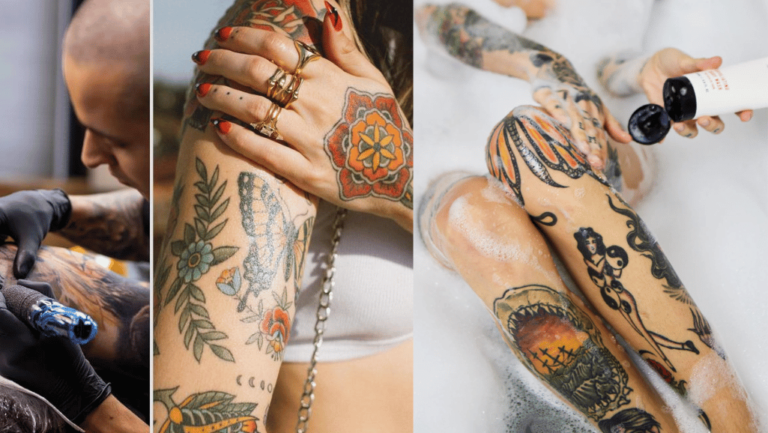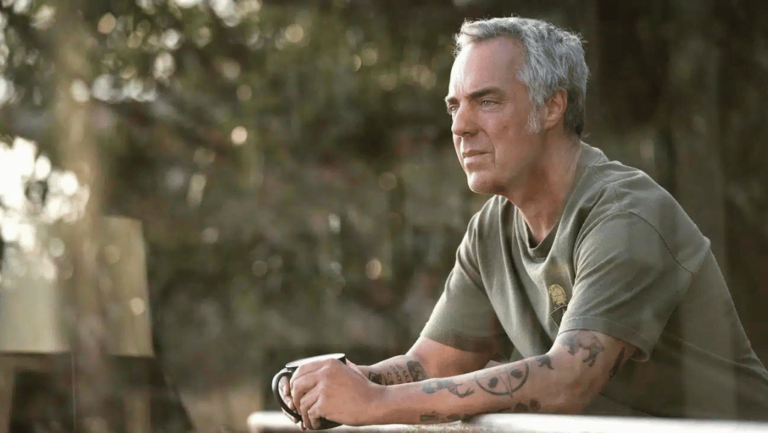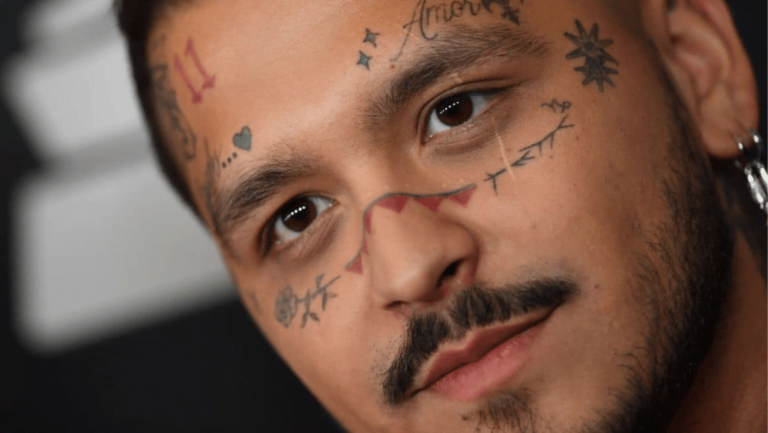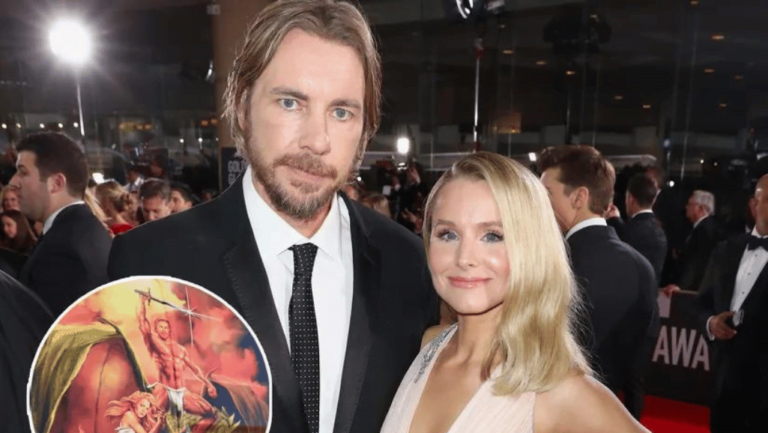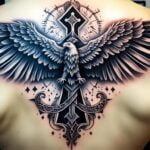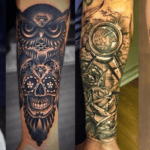Tattoos have long been a subject of fascination. People from various walks of life explore the appeal of tattoos and the allure of body art. The question remains: Are tattoos attractive?
Public perception plays a significant role in determining the attractiveness of tattoos. Understanding how society views tattoos can shed light on their appeal and the reasons behind their popularity.
From celebrities to everyday individuals, tattoos have become a form of self-expression and a way to showcase personal beliefs and interests. The increasing prevalence of tattoos in recent years suggests a shift in societal attitudes towards body art.
However, the attractiveness of tattoos is not without its complexities. Employment opportunities, for instance, may be influenced by visible tattoos. The potential impact on future career prospects raises important considerations for individuals contemplating getting tattooed.
This article delves into various aspects of the perception and attractiveness of tattoos. It explores the rise of tattooing, the impact on employment, the perception of tattoos among different generations, managing tattoo disclosure, tattoos in popular culture, and more.
Join us as we delve into the world of tattoos, exploring how they are perceived and the factors that contribute to their appeal.
Key Takeaways:
- The perception and attractiveness of tattoos in society are influenced by various factors.
- Public perception plays a significant role in determining the appeal of tattoos.
- The rise in tattooing suggests a shift in societal attitudes towards body art.
- Tattoos may have implications for employment opportunities.
- Tattoos are viewed as a form of self-expression and are prevalent in popular culture.
Understanding the Rise in Tattooing
A study published in Cureus highlights the prevalence of tattoos in the US, shedding light on the increasing popularity of this form of body art. Over the years, there has been a significant rise in tattooing, with more individuals of all ages and groups choosing to get inked.
One of the contributing factors to the rise in tattooing is the changing social perception of tattoos. What was once considered taboo or associated with subcultures is now widely accepted and even celebrated. Tattoos have become a way for people to express themselves and create a unique identity.
Furthermore, the prevalence of tattoos is not limited to a particular demographic. People from various backgrounds, professions, and age groups are opting to get tattoos, challenging the traditional stereotypes associated with body art. This prevalence of tattoos reflects the shifting cultural norms and the increasing acceptance of tattoos as a form of self-expression.
However, while there is a growing fascination with tattoos, it is essential to consider the phenomenon of tattoo regret. Despite the popularity of tattoos, some individuals may experience regret after getting inked. Factors such as changes in personal or professional circumstances, evolving tastes, or simply dissatisfaction with the chosen design may contribute to tattoo regret.
The Correlation Between Tattoo Regret and the Rise in Tattooing
The increase in the number of people getting tattoos naturally leads to a higher proportion of individuals experiencing tattoo regret. As the prevalence of tattoos continues to grow, it becomes increasingly important for both tattoo enthusiasts and artists to consider the potential for regret.
This correlation between the rise in tattooing and tattoo regret underscores the need for careful consideration and thoughtful decision-making when getting a tattoo. It is essential to choose designs and meanings that will withstand the test of time and align with personal values and aspirations.
The Role of Education and Consultation
One way to address the issue of tattoo regret is through education and consultation. Tattoo artists can play a crucial role in guiding clients and providing them with the necessary information to make informed decisions about their tattoos. By discussing the potential risks, permanence, and aftercare of tattoos, artists can help clients minimize the chances of regret.
Additionally, individuals considering getting tattoos should take the time to thoroughly research and explore different tattoo designs, styles, and meanings. This process of self-discovery and reflection can help individuals make choices that they are less likely to regret in the future.
Impact of Tattoos on Employment Opportunities

A study conducted by Michael D. Wessely from the University of Wisconsin-Whitewater sheds light on the impact of tattoos on employment opportunities. The research findings indicate that individuals with visible tattoos often face challenges in the hiring process, resulting in lower employment rates compared to those without visible tattoos. This has significant implications for both individuals who are considering getting tattooed and their future career prospects.
The study highlights the prevailing bias in some workplaces against visible tattoos and the influence it has on hiring decisions. Employers may perceive visible tattoos as unprofessional or inappropriate, leading them to favor candidates without visible body art. As a result, individuals with tattoos may encounter obstacles in securing job opportunities and advancing in their careers.
Employment decisions regarding tattoos often stem from concerns about maintaining a certain brand image or projecting a conservative appearance to clients and customers. Some industries, such as finance, law, and customer-facing roles, place a greater emphasis on appearance and may harbor more negative attitudes towards tattoos. However, it is important to note that these perceptions and prejudices surrounding tattoos vary across industries and organizations.
While there has been a gradual shift towards greater acceptance and understanding of tattoos in the workplace, the study suggests that visible tattoos could still impact hiring decisions. As a result, individuals contemplating getting tattooed should carefully consider the potential consequences on their employment prospects, especially in industries where appearance plays a significant role.
To visually explore the impact of tattoos on employment opportunities, the table below provides valuable insights into the perceptions surrounding tattoos in different professions.
| Profession | Perception of Tattoos |
|---|---|
| Finance | Tattoos may be seen as unprofessional and a hindrance to building client relationships. |
| Education | Some schools and districts may have strict dress code policies that prohibit visible tattoos. |
| Creative Industries | Tattoos are often embraced and seen as a form of self-expression and creativity. |
| Healthcare | Visible tattoos may be viewed as distracting or unprofessional by patients and colleagues. |
| Technology | Tattoos are generally accepted and seen as a non-issue in the tech industry. |
It is crucial for individuals with tattoos to be aware of the potential impact on their employment prospects. However, it is equally important for organizations to reassess their preconceived notions about tattoos and consider the skills, qualifications, and experience of candidates independent of their body art. By recognizing the value of diversity and embracing individuals with tattoos, employers can create a more inclusive and accepting workplace culture.
Perception of Tattoos Among Millennials
An article published in College Student Journal sheds light on the fascinating perceptions and beliefs of Millennials when it comes to visible tattoos. Millennials, born between the early 1980s and late 1990s, have shown a unique perspective on tattoos that sets them apart from previous generations.
Despite the awareness of the potential impact of tattoos on employment and professional opportunities, many Millennials still consider getting tattooed. Tattoos have become a significant form of self-expression for this generation, allowing them to showcase their individuality and personal beliefs.
Millennials view tattoos as symbols of empowerment, creativity, and self-discovery. For them, tattoos are more than just body art; they represent a story, a moment, or an idea that holds personal significance. Millennials embrace tattoos as a way to curate their personal brand and communicate their values to the world.
To Millennials, tattoos are seen as normal and mainstream rather than rebellious or countercultural. They appreciate the artistic aspect of tattoos, and many choose designs that reflect their interests, passions, or cultural influences. From minimalist symbols to intricate artwork, Millennials embrace a wide range of tattoo styles and designs.
Generational Differences in Tattoo Perception
It’s interesting to note the generational differences in how tattoos are perceived. While older generations may still associate tattoos with negative stereotypes or associate them with certain subcultures, Millennials have helped shift the perception of tattoos into a more positive and inclusive light.
Millennials challenge the traditional notions of professionalism and conformity, valuing authenticity and self-expression over societal expectations. They prioritize personal fulfillment and are more willing to embrace unconventional forms of self-expression, such as tattoos.
By breaking the mold and proudly displaying their ink, Millennials are reshaping societal norms and redefining beauty standards. They view tattoos as a celebration of individuality and freedom of expression, a way to stand out and make a statement in a world that can often feel homogenous.
The image above illustrates the connection between Millennials and tattoos, showcasing the diverse and creative artwork that they often gravitate towards. It captures the essence of self-expression through ink, reflecting the individuality and unique stories of each Millennial.
In the next section, we will delve into the challenges and strategies for managing tattoo disclosure in various settings, considering the balance between personal expression and societal expectations.
Managing Tattoo Disclosure
Disclosing or concealing tattoos is a crucial aspect of managing public perception and privacy. According to the qualitative study conducted by Michael D. Wessely, individuals employ various strategies to navigate these dynamics both online and in face-to-face interactions.
One factor that influences tattoo disclosure is the location of the tattoo. Visible tattoos, such as those on the face, neck, or hands, may impact how individuals choose to communicate their body art. Some opt for complete disclosure, using their tattoos as a conversation starter or a means of personal expression. Others may prefer to conceal or minimize the visibility of their tattoos, especially in professional environments.
The management of communication plays a significant role in tattoo disclosure. Individuals with tattoos may encounter different reactions based on the context in which they reveal their body art. The level of disclosure varies from open and candid discussions about tattoos to more discreet and selective disclosures. The decision to disclose or not often depends on the individual’s comfort level and their assessment of the situation.
Clothing choices can also influence tattoo disclosure. For instance, individuals may opt for attire that either showcases or conceals their tattoos, depending on their desired level of publicness and privacy. This choice enables individuals to control the visibility of their body art in different social settings and align it with their personal identity and values.
When managing tattoo disclosure online, individuals must consider the permanence and public nature of digital platforms. It is essential to be mindful of sharing images or information that could compromise privacy or impact personal and professional relationships. Striking a balance between authenticity and privacy becomes a critical aspect of one’s online presence.
Strategies for Managing Tattoo Disclosure
- Carefully consider the location and visibility of tattoos when choosing to disclose or conceal.
- Adapt communication strategies based on the context and the reactions expected from various individuals or groups.
- Select clothing styles that align with personal preference and desired level of tattoo visibility.
- Exercise caution when sharing tattoo-related information or images online to protect privacy and manage public perception.
Comparison of Strategies for Tattoo Disclosure
| Strategy | Advantages | Disadvantages |
|---|---|---|
| Complete Disclosure | Facilitates self-expression and openness. | Potential negative reactions from individuals or employers with negative perceptions of tattoos. |
| Selective Disclosure | Allows for controlled disclosure based on comfort and context. | May lead to certain aspects of identity being hidden or not fully expressed. |
| Concealment | Provides the ability to control visibility in professional or conservative settings. | Might lead to discomfort or feelings of inauthenticity for individuals with a strong desire for self-expression. |
Managing tattoo disclosure involves a delicate balance between expressing one’s identity and managing the potential consequences of tattoo visibility. By considering the location of tattoos, communication strategies, clothing choices, and online presence, individuals can navigate the publicness and privacy surrounding their body art.
Tattoos in Popular Culture
Tattoos have become an integral part of American culture, transcending mere body art to make a significant impact on popular culture. From media personalities to musicians, actors, and athletes, tattoos are prominently displayed, contributing to their increased acceptance and generating widespread interest among the general public.
Media representation plays a pivotal role in shaping public opinion and perception of tattoos. Celebrities and influencers who proudly showcase their ink on various platforms, including social media, music videos, and red carpet events, have normalized and popularized tattoos. Through their choices, they have helped break down societal barriers and challenged traditional stereotypes associated with body art.
The presence of tattoos in popular culture has led to their unique symbolism and cultural significance. Tattoos are no longer viewed solely as rebellious or associated with societal outcasts, but rather as personal statements, expressions of identity, and artistic manifestations. This shift in perception has fueled the growing interest and fascination with tattoos among individuals of all ages and backgrounds.
The Influence of Media on Tattoo Trends
Media platforms and entertainment industries have played a crucial role in fueling tattoo trends and shaping popular culture. As celebrities adorn their bodies with intricate and symbolic tattoos, fans and admirers often seek to emulate these designs, creating a ripple effect as trends spread across communities.
Additionally, the representation of tattoos in movies, TV shows, and music videos further reinforces their allure and intrigue. Tattoos are frequently integrated into character development, enhancing their uniqueness, complexity, and depth. This integration allows for deeper storytelling and provides a lens through which audiences can connect and relate to fictional characters.
The Role of Tattoos in Fashion
The fashion industry has embraced tattoos as a form of personal style and self-expression. Fashion icons and designers have paved the way for incorporating tattoos into runway shows, magazine editorials, and advertising campaigns. Models proudly showcasing their tattoos challenge traditional beauty standards and celebrate individuality.
Moreover, tattoo-inspired clothing, accessories, and even temporary tattoos have become popular fashion statements. This fusion of fashion and body art allows individuals to experiment with different styles and designs without the permanence of a real tattoo.
Tattoos as Artistic Inspiration
Tattoos have long been celebrated as works of art, and their presence in popular culture has further solidified this perception. Renowned tattoo artists have gained recognition and acclaim for their creativity, skill, and ability to bring intricate designs to life on the human canvas.
The visibility of tattoos in popular culture has exposed a wider audience to the artistry behind tattooing, inspiring individuals to appreciate tattoos as a valid and respected form of artistic expression. This recognition has led to collaborations between tattoo artists and other creative fields, such as fashion, fine art, and photography, further blurring the lines between different artistic mediums.
| Celebrity | Tattoo |
|---|---|
| Rihanna | Maori-inspired hand tattoo |
| David Beckham | Various tattoos, including a sleeve and back designs |
| Angelina Jolie | Extensive collection of tattoos, including geographical coordinates and meaningful quotes |
| Post Malone | Face tattoos, hand tattoos, and full arm sleeves |
These are just a few examples of celebrities who have used their tattoos to make powerful statements, contribute to the cultural significance of body art, and inspire others to express themselves through tattoos.
In conclusion, the presence of tattoos in popular culture has been instrumental in shaping public perceptions and fostering acceptance. Media representation, the influence of celebrities, and the integration of tattoos in fashion and art have propelled tattoos from the realm of alternative subculture to mainstream admiration. As tattoos continue to hold a significant place in popular culture, their impact on societal norms and perceptions will undoubtedly continue to evolve and shape the future of body art.
Conclusion
In conclusion, the perception of tattoos remains a complex societal phenomenon. As tattoos continue to grow in popularity, it is important to consider their impact on employment opportunities and public perception. While there has been an increasing acceptance of tattoos, individuals with visible body art may still face challenges in certain work environments.
However, understanding public perceptions and individual motivations for getting tattoos is essential in exploring the allure and attractiveness of body art. For many, tattoos serve as a form of self-expression and a way to showcase their personal stories, beliefs, and identities. This aspect of tattoo attractiveness cannot be overlooked.
As society evolves and generational differences shape attitudes towards body art, it is crucial to have an open dialogue about tattoos. This discussion should involve employers, employees, and individuals considering getting tattooed. By fostering understanding and acceptance, we can embrace the unique beauty and cultural significance that tattoos bring to our world.
FAQ
Are tattoos attractive considered?
How prevalent are tattoos in the US?
Do people regret getting tattoos?
Do tattoos affect employment opportunities?
How do Millennials perceive tattoos?
How do individuals manage tattoo disclosure?
Do tattoos have a presence in popular culture?
Forhad
Forhad's writing is not just about the artistry of tattoos or the latest trends in the industry; it's an exploration of the deep-rooted connections people have with their tattoos, reflecting personal narratives, cultural histories, and moments of transformation. Through a mix of in-depth features, personal narratives, and insightful analyses, he sheds light on the multifaceted nature of tattooing, revealing the emotional and cultural layers that lie beneath the surface.

